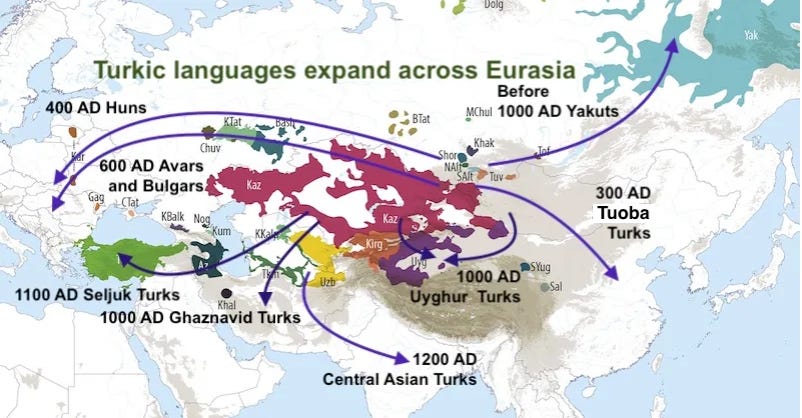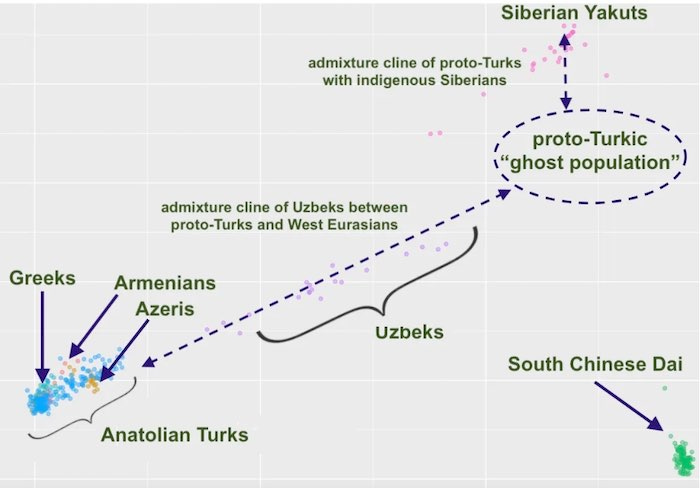Reference




OpenAI's Answer
The process of Turkification had a significant impact on Central Asia, leading to major demographic, cultural, and linguistic changes over time. Here's an overview:
-
Demographic Changes: Starting around the 6th century, Turkification began with the migration of Turkic nomads into Central Asia. This led to a substantial demographic shift as these nomads settled in the region, displacing or assimilating the indigenous Iranian-speaking populations (source: Wikipedia).
-
Cultural and Linguistic Influence: Over time, the Turkic peoples brought their languages and cultures, leading to a transformation in the cultural landscape of Central Asia. The native populations gradually adopted Turkic languages, and Islam, which spread alongside Turkic expansion, played a crucial role in solidifying these cultural changes (source: Facts and Details).
-
Assimilation and Displacement: The Turkic migrations and subsequent political dominance led to widespread assimilation of local populations. The Iranian-speaking nomads and other indigenous groups in Central Asia were either displaced or integrated into the growing Turkic culture (source: Made in Turkey Tours).
These changes have shaped the ethnic and cultural composition of Central Asia today, where Turkic ethnic groups are predominant, except for minor exceptions like the Persian-speaking Tajiks.
For visual reference, here are some images related to the historical and cultural aspects of Turkification in Central Asia:
